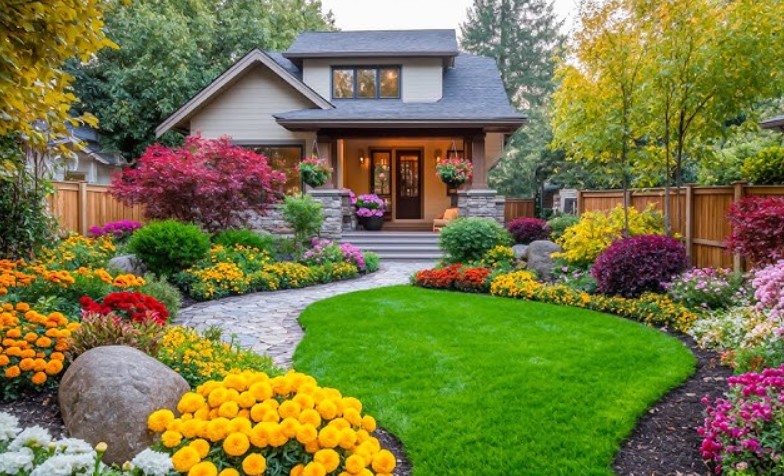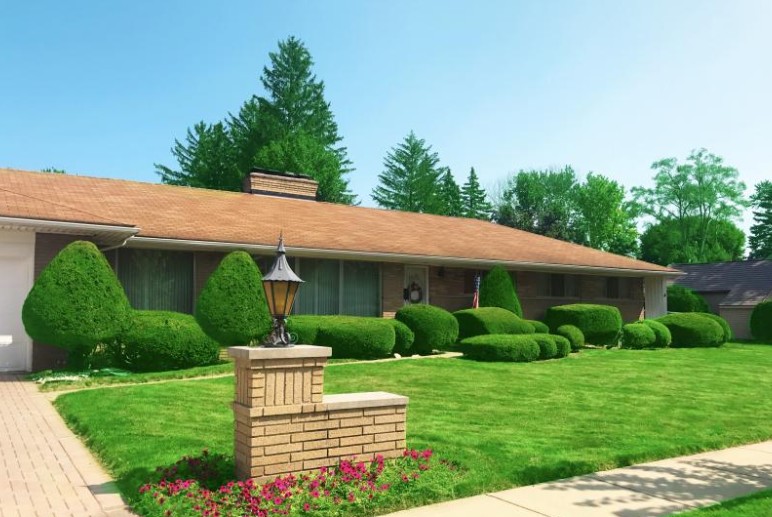You don’t need a piece of land to plant a garden. You can create your own Eden in small spaces such as a deck, balcony or even the front stoop with the use of containers.
With a majority of Minneapolis residents now renting and many seniors continuing to downsize, small-space gardeners can reap many benefits. In fact, it might be said that this type of green-fingered pursuit provides just as much mood-boosting foliage and bloom without all the work of a big yard.
Getting started
With containers, bigger is better. Plants have more room to grow and don’t need as much water. However, on decks and balconies, weight is a consideration (check apartment or condo association rules ahead of time).
Luckily, there are lots of lightweight options. Nowadays plastic and composite containers have become more attractive and widely available. Plus, they require less effort to handle and move around.
Feel free to recycle and upcycle, too — anything that holds soil and has drainage holes will work. Just be mindful of its final weight when fully watered.
Container-grown plants need more frequent watering than those in the ground. A nearby spigot or hose will make your endeavor easier, especially as the season heats up. However, a watering can works fine if you garden on a balcony or have just a few plants.
If you don’t have time to water regularly or you travel often, self-watering containers with a built-in reservoir are a good investment. Drip systems for containers are simple to hook up to an existing spigot — set a timer and sit back.
Once plants start growing, you won’t even see the water lines. Use saucers under pots to collect draining water to avoid stains and damage to surfaces.
What to plant
Balconies, especially those facing south and west, can sizzle in the summer. Add wind to the equation. The higher you go, the breezier it gets and plants can dry out in the process.
Keep all of this in mind when determining how often to water and which plants to choose. Pick sturdy specimens or ones that wave with the breeze.
Very few plants can survive a Minnesota winter above ground in containers, so choose from annuals (single-season plants) for your plantings. Rather than feeling limited by this, just think — a fresh start, every year!
Determine if your space is sunny, shady, or maybe a little of both and then go with the right plants for the right place. For sunny spots: angelonias, lantanas, vincas, petunias, celosias, verbena, dahlias, zinnias and tried-and-true geraniums all give a lot of bang for your buck.
For those extra hot spots, select succulents and grasses paired with tough but colorful and pretty portulaca (moss rose) or gomphrena. Water-wise herbs like lavender, oregano, rosemary, thyme and sage look charming in pots. So give your deck or patio a Mediterranean vibe while kicking up the flavor of your latest farmers market finds.
If the area you’re planting in has morning sun or partial shade, go for a leafy look. Try elephant ears, ferns, cannas, papyrus and coleus. Maybe some of your houseplants such as that potted palm need to get outside and take a vacation, too.
For blooms, begonias from the angelwing and dragon wing series are smart choices. With pink, red or coral flowers, they start small but grow quickly into impressive-looking but easy-care plants.
Design principles
If you have enough room and ambition, groupings of colorful containers sitting cheek by jowl can mimic a cottage garden or chaotic English border. Use the same design principles concerning color palette, textures and varying heights. Bonus: The containers don’t dry out as soon when they sit close together.
When everyone’s outside in the summer, privacy can be an issue. Create a sense of enclosure with ornamental grasses, or employ vines such as black-eyed Susan vine, jasmine or mandevilla in rectangular planters or even elevated beds, with trellises for them to climb. An inexpensive solution is to sow quick-growing vines from seeds such as morning glory and runner beans.
Think 3-D, using all available air space by arranging plants at different levels. Place some plants on small tables or stands, staggering the heights, others in hanging baskets. Plant walls and grow bags allow you to go vertical on existing fences or outside walls.
Only room for a single pot at the front doorstep? Then go big and bright. Whether it’s a tasteful display or a jumble of mismatched blooms, you’ll smile each time you pass by.
Halfway through summer, those hardworking blooms will start to fade. Flowering annuals will benefit from a trim and some liquid fertilizer.
It’s painful to cut them back, but you’ll be rewarded with a new flush of bloom that takes you to the end of summer.
When the growing season ends, there are a few plants that can retreat inside with you. Bring in houseplants by mid-September. Succulents transition well indoors to a sunny window.
Be sure to empty and clean out your containers, and store the items indoors or at least upside down in a sheltered spot. Then start dreaming about next year.
Rhonda Hayes is a Twin Cities-based Master Gardener, writer and author of “Pollinator Friendly Gardening.”








